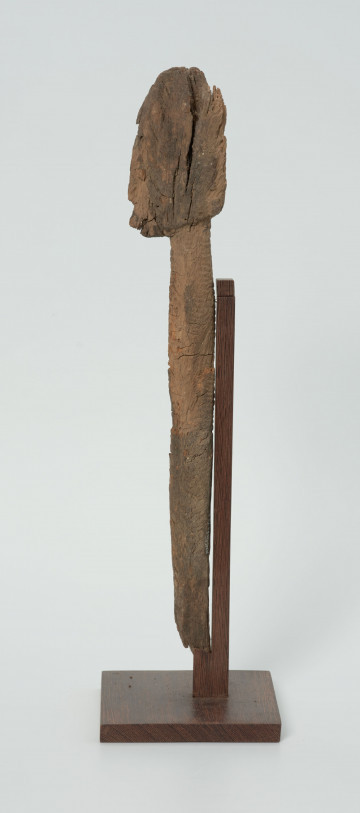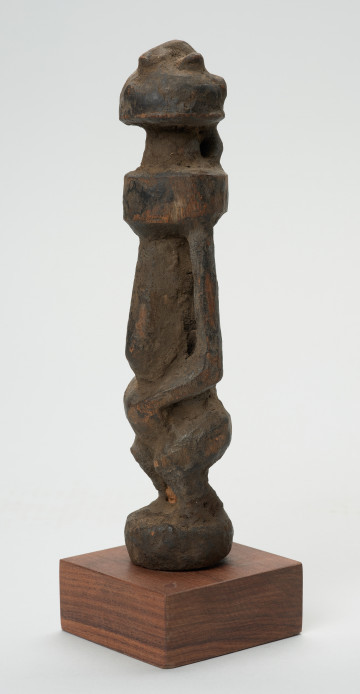
Figure - Nommo
między 1901 — 1950
National Museum in Szczecin
Part of the collection: Collection of Dogonian art
The Ark of Nommo otherwise known as aduno koro or the ark of the world, is a representation of a mythical boat (popularly known as an ark) sent by Amma to reorganise and populate the Earth. According to Dogon mythology, their ancestors came from a planet located in the Sirius system. They made the journey from their homeland to Earth on the koro, on which Amma placed, in addition to the ancestors of humans, the forefathers of all other creatures, animals and plants. The ark symbolises the whole world known to the Dogon. They imagine it as a boat in the shape of a two platform. The lower platform reflects the disordered old world. On it are placed the ancestors of the Dogon neighbours (Mossi, Samogo, Bamana, Bozo, Fulbe), the members of the castes: griots, smiths, dyam (leather-workers) and Yeban - beings living in the bush. On the upper platform, symbolising the coming of order, travelled the ancestors of the Dogon and wild and farm animals. The ark was led by Nommo, the primordial being who created order in the universe. When the ark landed on Earth, sunlight appeared and purifying rain fell (although it was in fact the life-giving seed of Nommo) as the signs that the earth-soil had become fertile. Nommo transformed into a horse and dragged the ark into the water, where it floated like a boat.According to another version of Dogon mythology, the ancestors of all creatures travelled on several different arks. On separate arks, Yurugu, the imperfect son of the god Amma, who disturbed the process of creation, Nommo travelling with four mixed pairs of Dogon ancestors, and other creatures and entities (animals, plants, minerals) that were to reproduce on Earth, arrived on Earth.Humanity born from the ancestors transported on the ark led by Nommo developed and organised life on Earth.
Ewa Prądzyńska
Author / creator
Dimensions
cały obiekt: height: 42 cm, width: 14 cm
Object type
container
Creation time / dating
Creation / finding place
Identification number
Location / status

między 1901 — 1950
National Museum in Szczecin

między 1951 — 2000
National Museum in Szczecin

między 1901 — 1950
National Museum in Szczecin
DISCOVER this TOPIC
Castle Museum in Łańcut
DISCOVER this PATH
Educational path